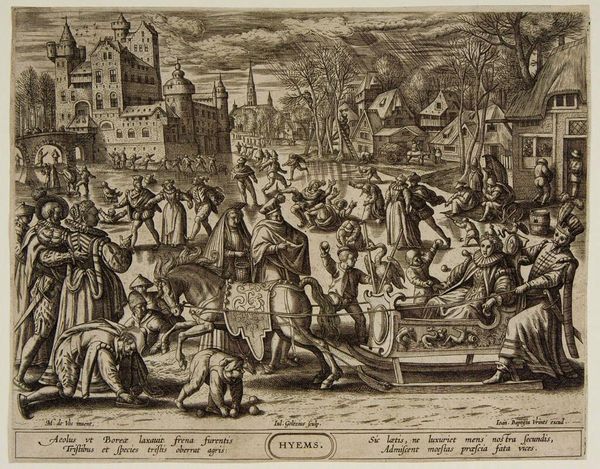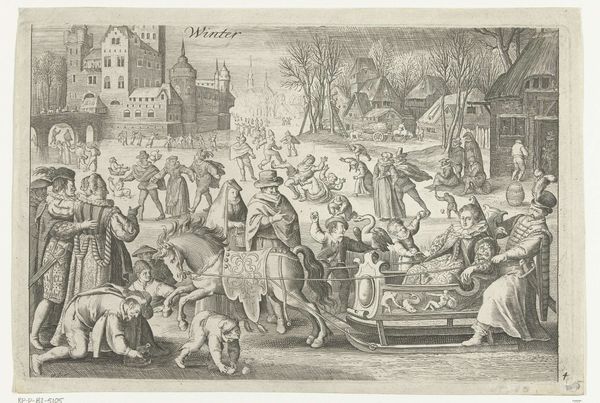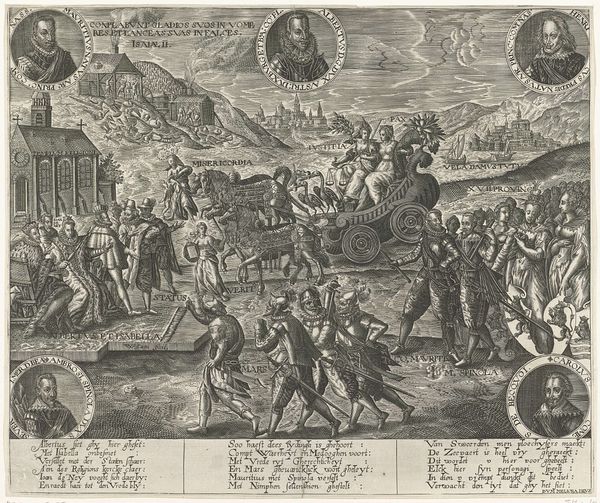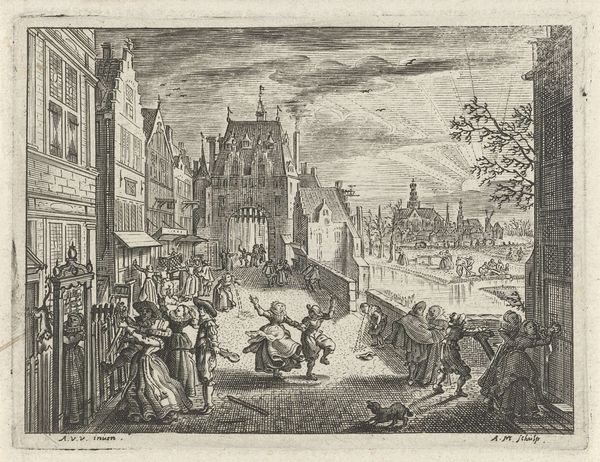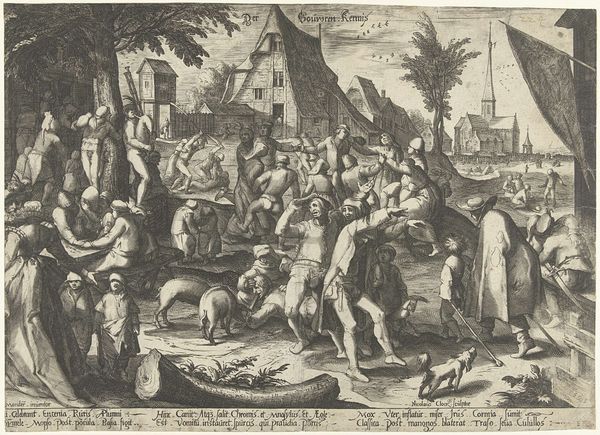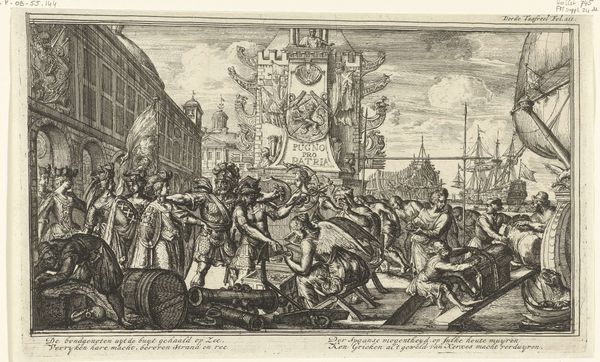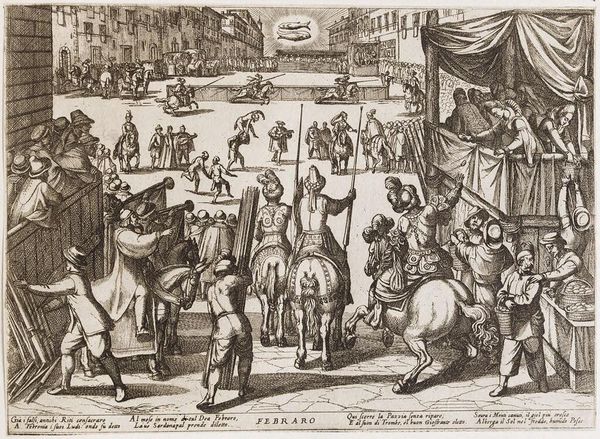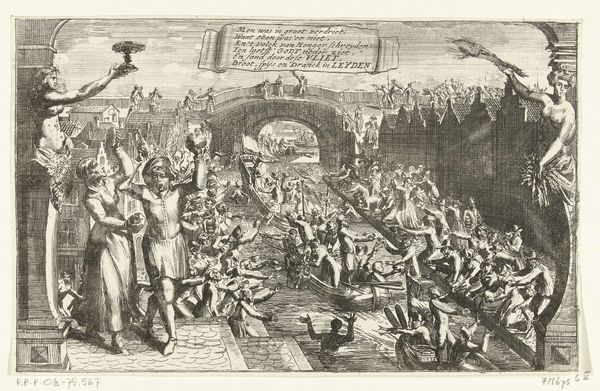
print, engraving
#
narrative-art
# print
#
pen illustration
#
landscape
#
winter
#
figuration
#
cityscape
#
genre-painting
#
northern-renaissance
#
engraving
Dimensions: width 284 mm, height 221 mm
Copyright: Rijks Museum: Open Domain
Editor: This is "Winter," an engraving made sometime between 1575 and 1595 by Julius Goltzius, currently residing in the Rijksmuseum. It's such a detailed, lively depiction of winter. What strikes me is how the artist has composed this wintry landscape with such contrasting textures and forms. How do you interpret this work through a formalist lens? Curator: What immediately arrests my attention is the dynamism achieved through line and form. Observe how Goltzius juxtaposes the intricate patterns of the figures' clothing with the stark, bare trees. Consider the spatial relationships: the looming castle versus the receding cityscape. It’s not merely representational, but a deliberate manipulation of visual elements. Do you see how the lines direct your eye? Editor: I do see that. The lines of the ice, the figures' movements... they all pull you through the scene. But what about the textual elements at the bottom, do those play into your formal analysis? Curator: Absolutely. While text isn't traditionally considered a formal element in painting, here its inclusion, its placement and the shapes it occupies, contributes to the overall composition. The way it anchors the image, providing a base and counterweight to the airy sky, demonstrates the artist’s compositional intelligence. Think of it as textual texture, offering a contrast to the smooth areas. Editor: So, even words become part of the visual structure? I hadn’t considered that before. I'm understanding how everything from the line quality to the arrangement of textual elements contributes to the overall experience of the piece. Curator: Precisely. And it's through this rigorous examination of form that we begin to unravel the deeper meanings and artistic intentions embedded within. Every deliberate stroke, every considered shape plays its part in a greater visual symphony.
Comments
No comments
Be the first to comment and join the conversation on the ultimate creative platform.
